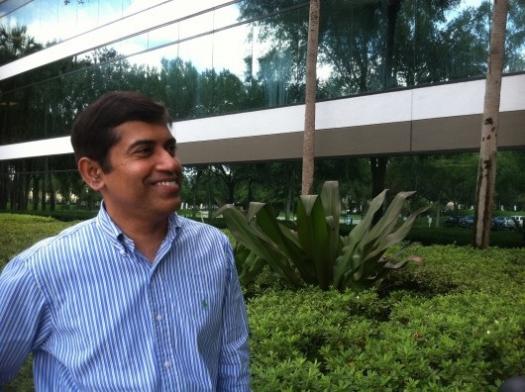Electrical cables that store energy

New nanotechnology may provide power storage in electric cables and clothes
Imagine being able to carry all the juice you needed to power your MP3 player, smartphone and electric car in the fabric of your jacket?
Sounds like science fiction, but it may become a reality thanks to breakthrough technology developed at a University of Central Florida research lab.
So far electrical cables are only used to transmit electricity. However, nanotechnology scientist and professor Jayan Thomas and his Ph.D. student Zenan Yu have developed a way to both transmit and store electricity in a single lightweight copper wire.
Their work is the focus of the cover story of the June 30th issue of the material science journal Advanced Materials. Also, science magazine Nature has published a detailed discussion about this technology in the current issue.
"It's an interesting idea," Thomas says. "When we did it and started talking about it, everyone we talked to said, "˜Hmm, never thought of that. It's unique.'"
Copper wire is the starting point but eventually, Thomas adds, as the technology improves, special fibres could also be developed with nanostructures to conduct and store energy.
More immediate applications could be seen in the design and development of electrical vehicles, space-launch vehicles and portable electronic devices. By being able to store and conduct energy on the same wire, heavy, space-consuming batteries could become a thing of the past.
It is possible to further miniaturise the electronic devices or the space that has been previously used for batteries could be used for other purposes. In the case of launch vehicles, that could potentially lighten the load, making launches less costly, Thomas explains.
Thomas and his team began with a single copper wire. Then he placed a sheath over the wire made up of nanowhiskers the team grew on the outer surface of the copper wire. These whiskers were then treated with a special alloy, which created an electrode. Two electrodes are needed for the powerful energy storage. So they had to figure out a way to create a second electrode.
They did it by adding a thin plastic sheet around the whiskers and wrapping it around using a metal sheath after generating nanowhiskers on (the second electrode and outer covering). The layers were then glued together with a special gel. Because of the insulation, the inner copper wire retains its ability to channel energy, but the layers around the wire independently store powerful energy.
In other words, Thomas and his team created a supercapacitor on the outside of the copper wire. Supercapcitors store powerful energy, like that needed to start a vehicle or heavy-construction equipment.
Although more work needs to be done, Thomas says the technique should be transferable to other types of materials. That could lead to specially treated clothing fibres being able to hold enough power for big tasks. For example, if flexible solar cells and these fibres were used in tandem to make a jacket, it could be used independently to power electronic gadgets and other devices.
"It's very exciting," Thomas comments. "We take it step by step. I love getting to the lab every day, and seeing what we can come up with next. Sometimes things don't work out, but even those failures teach us a lot of things."
Yu is the co-author of the study. He works in Thomas' Nano Energy-Photonics Group. It conducts research focused primarily on nanostructured supercapacitors and lithium-ion batteries, nanoarchitectured light-trapping solar cells, photorefractive polymers for 3D display applications, and nonlinear optical materials.



































